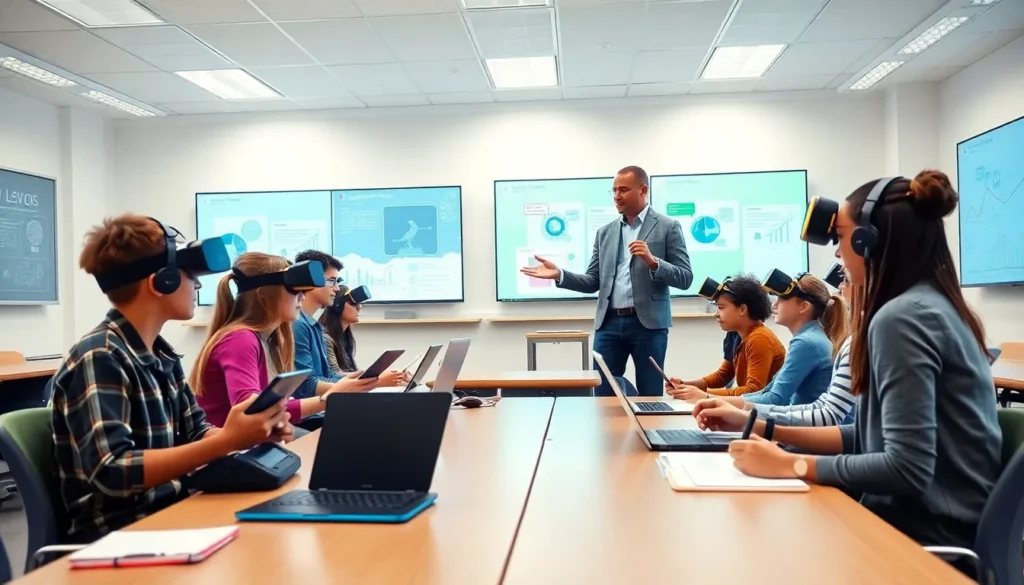Table of Contents
ToggleImagine a classroom where every student paints their own pathway to knowledge, guided by tech-savvy mentors and innovative digital tools. Welcome to the world of EdTech programs, where education isn’t just a lecture but a vibrant, engaging experience. These programs are revolutionizing how students learn and interact with information. Whether you’re a teacher, student, or parent, understanding EdTech is key to navigating this exciting educational landscape. Let’s jump into how these programs are reshaping education for the future.
Overview of EdTech Programs

EdTech programs leverage technology to enhance teaching and learning. These initiatives encompass everything from online courses and mobile apps to interactive software and virtual reality experiences. By integrating technology into classrooms, educators aim to create more engaging and personalized learning experiences. Also, EdTech is not limited to schools: it extends to learning environments across workplaces and communities. It allows for flexible learning paths tailored to each learner’s needs, whether in a traditional setting or online.
Importance of EdTech in Modern Education
The significance of EdTech in today’s educational climate cannot be overstated. With an ever-growing emphasis on STEM fields, online learning platforms provide students with access to a wealth of resources that might otherwise be unavailable. Not only does this democratize learning, but it also optimizes student engagement. Also, the COVID-19 pandemic underscored its importance. Many schools turned to EdTech solutions to continue delivering quality education remotely, proving that technology can bridge gaps when traditional methods fall short.
Types of EdTech Programs
EdTech programs come in various forms, each catering to different educational needs. Here are a few notable types:
- Learning Management Systems (LMS): Tools like Moodle and Canvas allow educators to manage course content, track student progress, and help communication.
- Gamification Platforms: Programs like Kahoot. and Quizizz transform learning into engaging games, motivating students through competition.
- Virtual Classrooms: Applications such as Zoom and Google Classroom enable real-time interaction among students and teachers, regardless of location.
- Educational Apps: From language learning apps like Duolingo to coding platforms like Codecademy, these resources provide students with specialized learning opportunities at their fingertips.
- Virtual Reality (VR) Learning: Immersive experiences offered by VR can transport students to historical sites or deep into the human body, sparking curiosity through exploration.
Benefits of Implementing EdTech Solutions
Incorporating EdTech solutions brings a host of benefits to the educational landscape:
- Enhanced Engagement: Interactive elements keep students interested, often leading to improved retention rates.
- Personalized Learning: Tailored content allows each student to progress at their own pace, accommodating various learning styles.
- Accessibility: Students can access resources anytime, anywhere, making education more inclusive for those with disabilities or those in remote areas.
- Data-Driven Insights: Educators can analyze performance metrics to identify student strengths and areas needing improvement, refining instructional strategies.
Challenges and Considerations in EdTech
Even though its many advantages, implementing EdTech isn’t without obstacles. A few challenges include:
- Digital Divide: Not all students have equal access to technology or the internet, which can exacerbate educational inequalities.
- Resource Burden: Schools may struggle with funding to acquire and maintain the latest technologies, resulting in inconsistent experiences.
- Training Needs: Educators must receive proper training to use these tools effectively. Without professional development, the potential of EdTech remains untapped.
- Data Privacy: With increased reliance on digital platforms, concerns about student data security have grown, necessitating stringent privacy measures.
Future Trends in EdTech Programs
The future of EdTech is both exciting and dynamic. Here are some trends to watch:
- Artificial Intelligence: AI will continue to personalize learning experiences, offering adaptive pathways that evolve with student progress.
- EdTech Ecosystems: Integrated platforms will emerge, allowing different tools to work seamlessly together, enhancing user experience.
- Increased Use of AR/VR: The use of augmented and virtual reality in education will grow, creating immersive learning opportunities across various subjects.
- Focus on Soft Skills: Lifelong learning will gain traction, with programs integrating soft skills training into their curricula to prepare students for the workforce.







